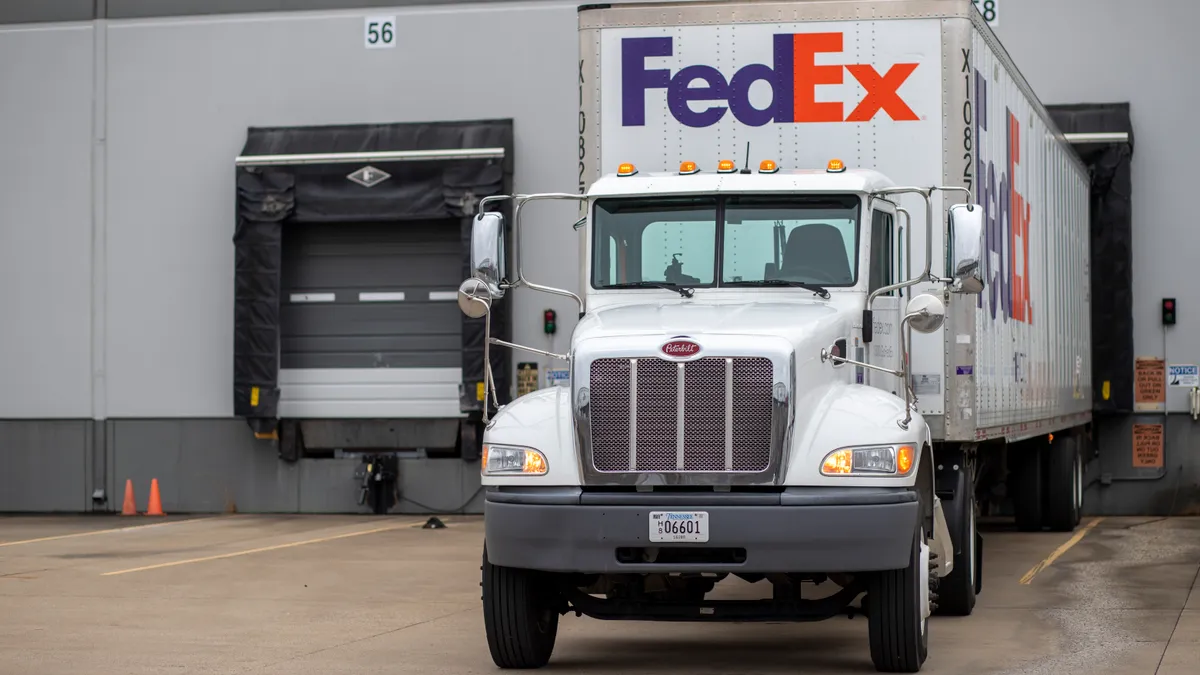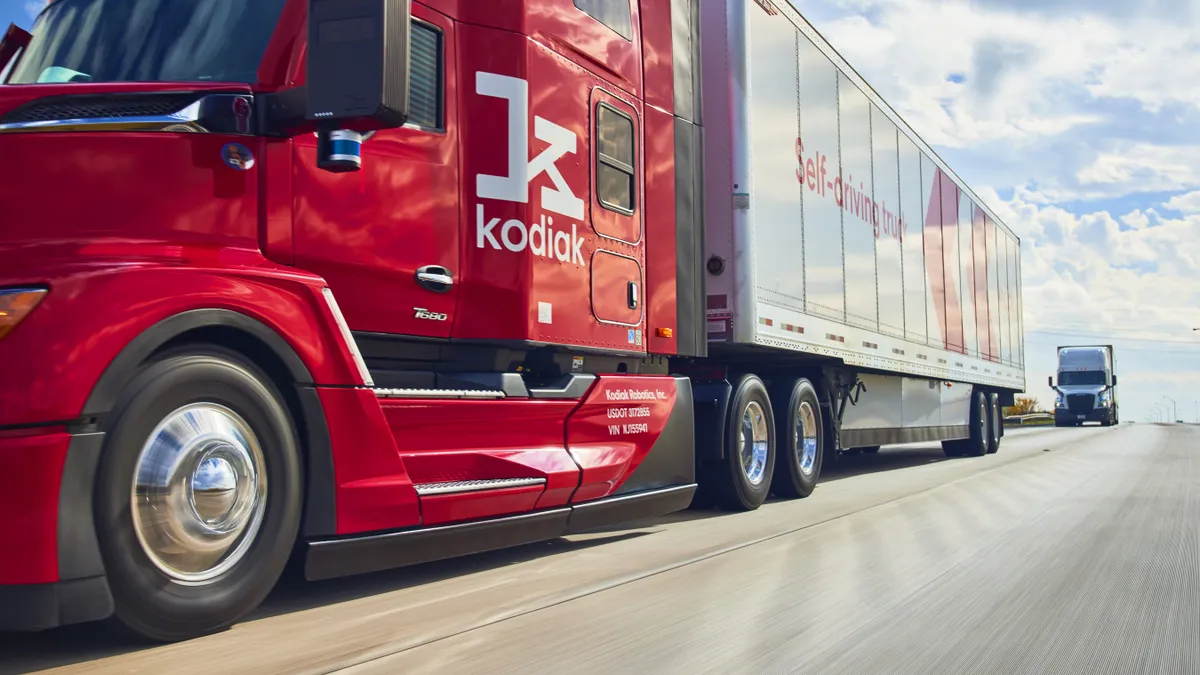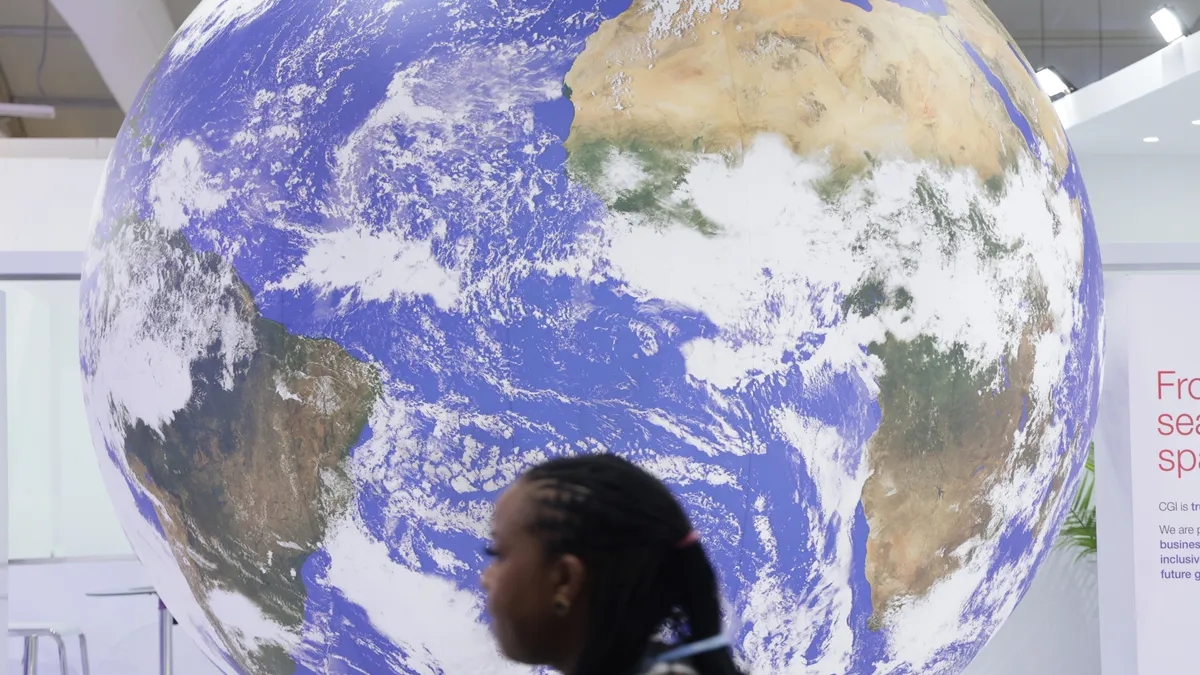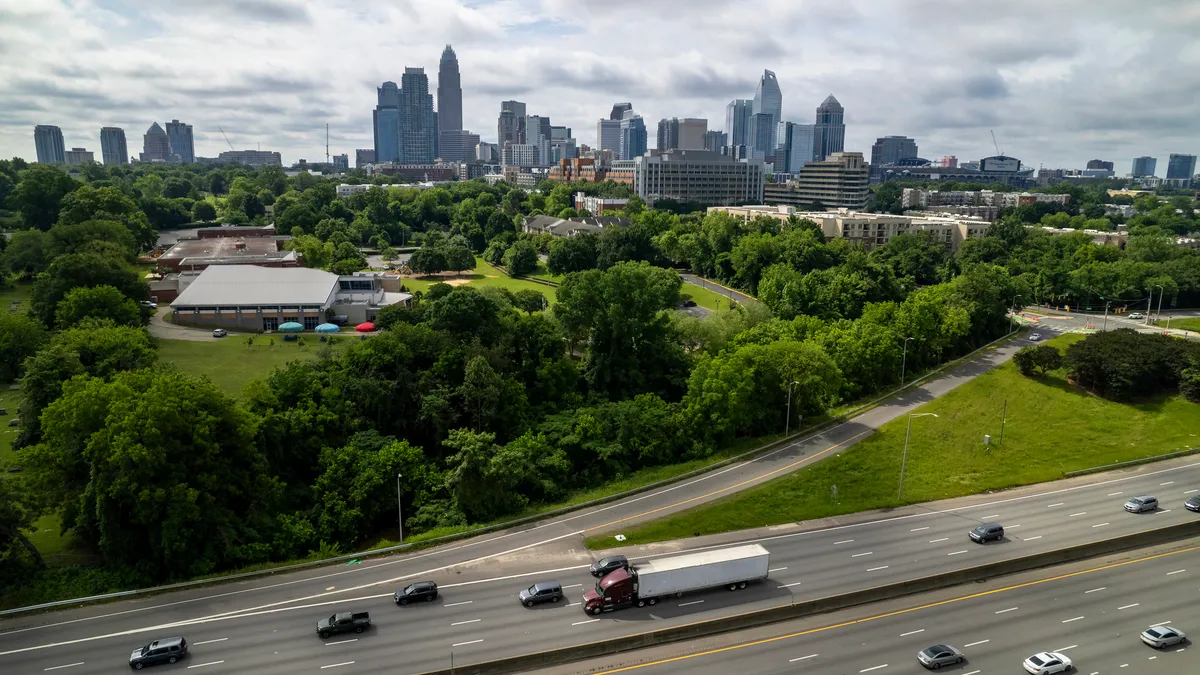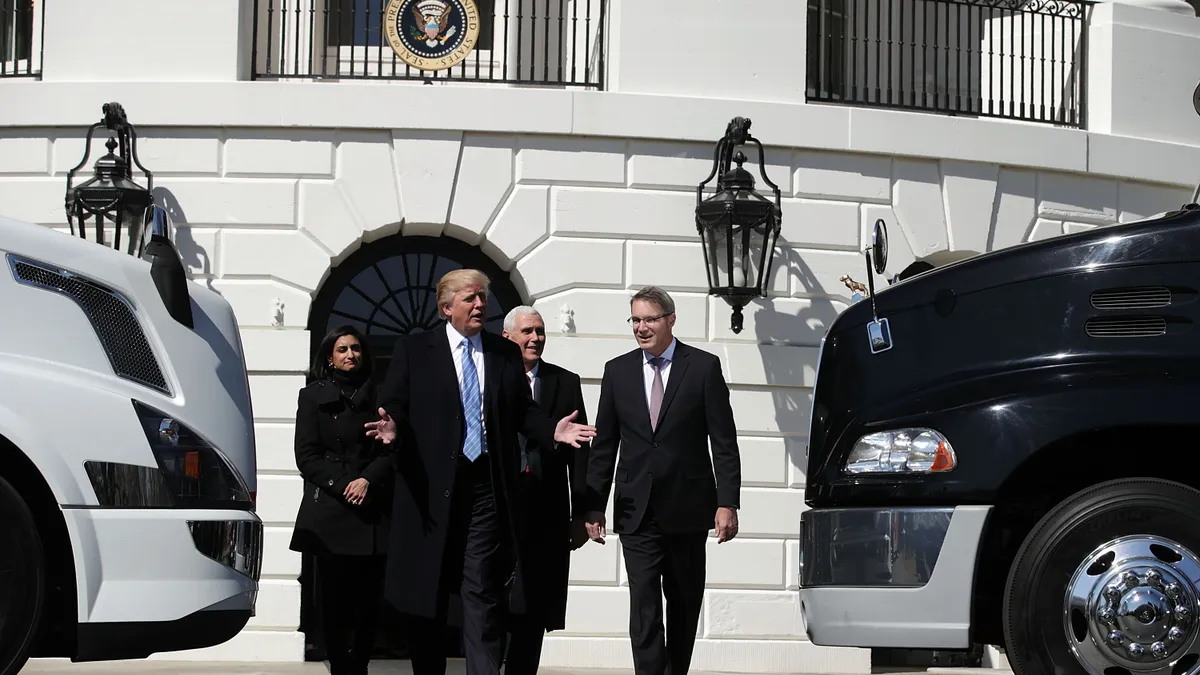This story is part of a three-part series on the past, present and future of visibility between carriers and shippers. Click here to view the entire package.
While transportation is far from the only piece of the global supply chain, it has come into greater focus during the most recent wave of disruptions.
The supply chain doesn't work if no one knows if the goods are on a boat, stuck in a port or about to show up at a warehouse's front gate. And that fact has pushed forward calls for improved visibility.
"Better supply chain visibility" was ranked by 40% of supply chain professionals in a Gartner survey last year as the most important area to improve supply chain risk management.
When it comes to supply chain, transportation has been "the flea at the end of the tail of the dog. We're the tail that's wagging the dog right now," said Bart De Muynck, a vice president analyst at Gartner.
Maturity, inertia and some funding help
Technologies that enable TMS and warehouse management systems are decades old. And through the years, they have helped shippers and carriers get a better grasp on where things are.
But while tools are better now than they were 30 years ago, the future of full visibility is in real-time transportation visibility platforms, or RTTVPs — third-party platforms that offer real-time insights on shipments via data from multiple sources, including API or EDI, carrier systems, in cab or trailer devices, and smartphones.
These kinds of technologies, while showing great promise, "are very immature," said De Muynck. FourKites and Project 44, which are "Leaders" in Gartner's 2021 Magic Quadrant for RTTVPs, were only founded in 2014 and are still kids compared to those established systems.
De Muynck said he doesn't see them needing a 30 year on-ramp, though. If technology matures in five stages, RTTVPs right now are in stage one and two, he said, and he anticipates reaching stage five in five years.
Technology maturity is only half of the adoption equation, however. Despite the need for greater visibility right now, it's still not cheap or easy to add the necessary tools to make it happen.
"I talk to customers every single day about starting the process on visibility and still see a very small percentage of companies that have the capacity."

Bart De Muynck
Vice President Analyst at Gartner
By 2023, Gartner predicted only 50% of global product-centric enterprises will have invested in real-time transportation visibility platforms.
Part of that is not the technology, but inertia.
"We are so stuck in our ways [about how] we do transportation that we need to control the way we want to do things manually. We can't get ourselves to even want to automate it," said De Muynck.
Another problem is cost, even for those who see the potential.
"I talk to customers every single day about starting the process on visibility and still see a very small percentage of companies that have the capacity," he added.
Jeff Lerner, founder of JL Consulting and formerly of Flock Freight, said he used to run into this problem, too.
The majority of Flock Freight customers are owner-operators or small fleets, he said. For those smaller companies, greater access to capital, a government-sponsored program, subsidies or a mix of all three would make a difference.
"I think every company would like to have some sort of improvement in their technology so they themselves could have a better idea of where their trucks are and all those things," he said.
Turning on the light
Despite these hurdles, RTTVPs are becoming more widespread, pressed by the global supply chain crisis, and the uptick in adoption.
"We're in a dark room and someone has come along with a tiny, little almost burned out candle," De Muynck said of where things are right now in stages one and two of RTTVP maturity. By stage five, the room "will be lit by a big light bulb."
The function of visibility will change, too, from reactive to predictive.
"In an ideal world, we end up in a scenario where every truck that's on the road has some sort of digital integration that provides real-time location [data]," Lerner said. And every truck driver, of a large fleet or an owner-operator, would have tools to let shippers and brokers know location, destination and estimated arrival times, he added.
That way, "decisions can be made in real time based on real-time data," he said.
"We're in a dark room and someone has come along with a tiny, little almost burned out candle."

Bart De Muynck
Vice President Analyst at Gartner.
This would reduce the number of empty miles that trucks are moving with no freight on board, and improve the speed and amount of freight that can be moved.
But change can't come just from carriers making these investments. Transportation visibility will also improve as shippers get a better handle on their part of the supply chain.
"One of the biggest issues we see is shippers who don't have visibility into what is actually on their own docks," said Lerner. "That contributes more to disruptions in supply chain than almost anything else, because by having that lack of visibility, there are countless trucks moving from point to point that are not completely full. That is an even more pressing issue."
If shippers get a better handle on that, then "shared truckload becomes a bigger solution that allows more freight to move more effectively. Technology will help with this solution," he added.






